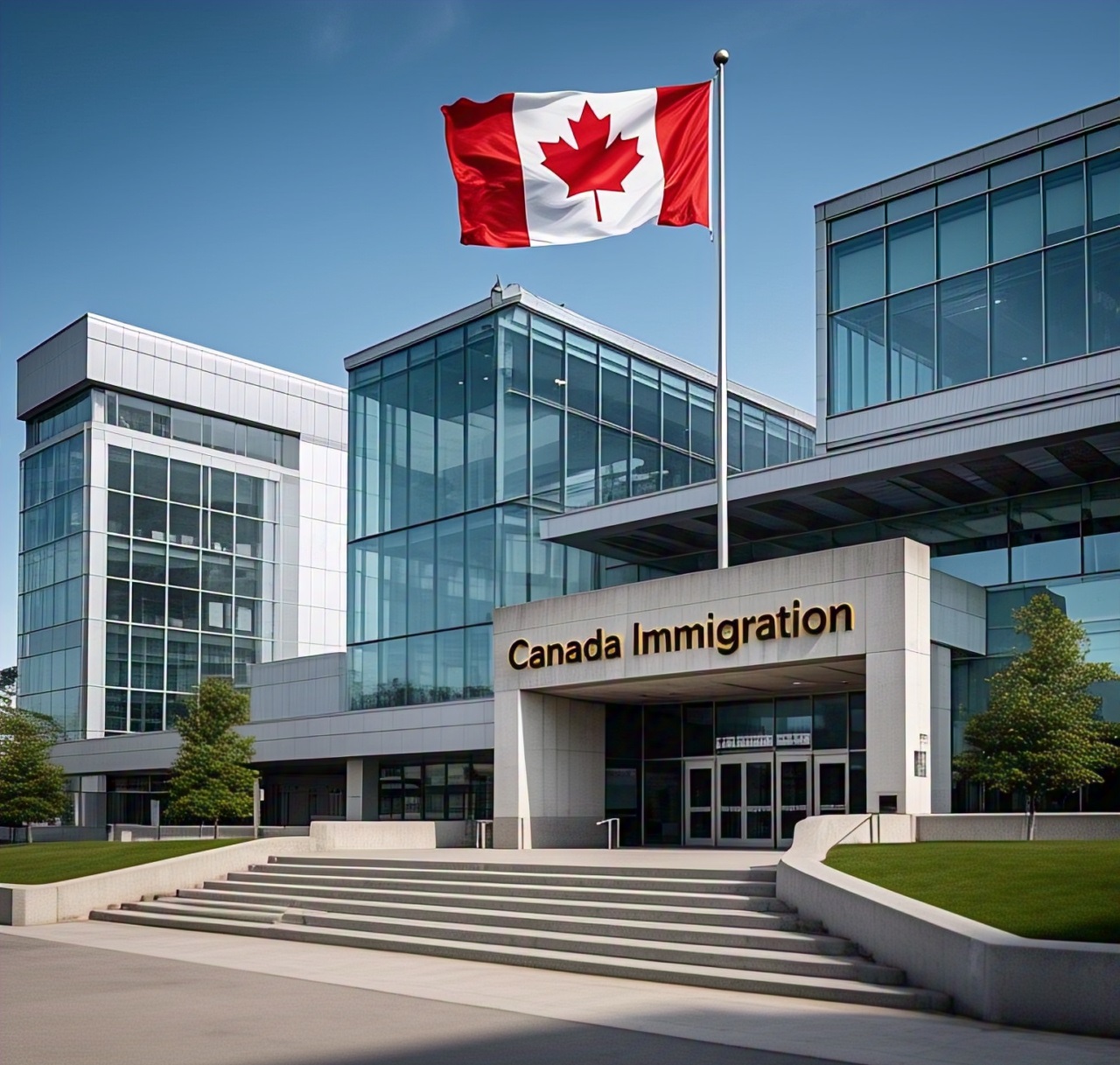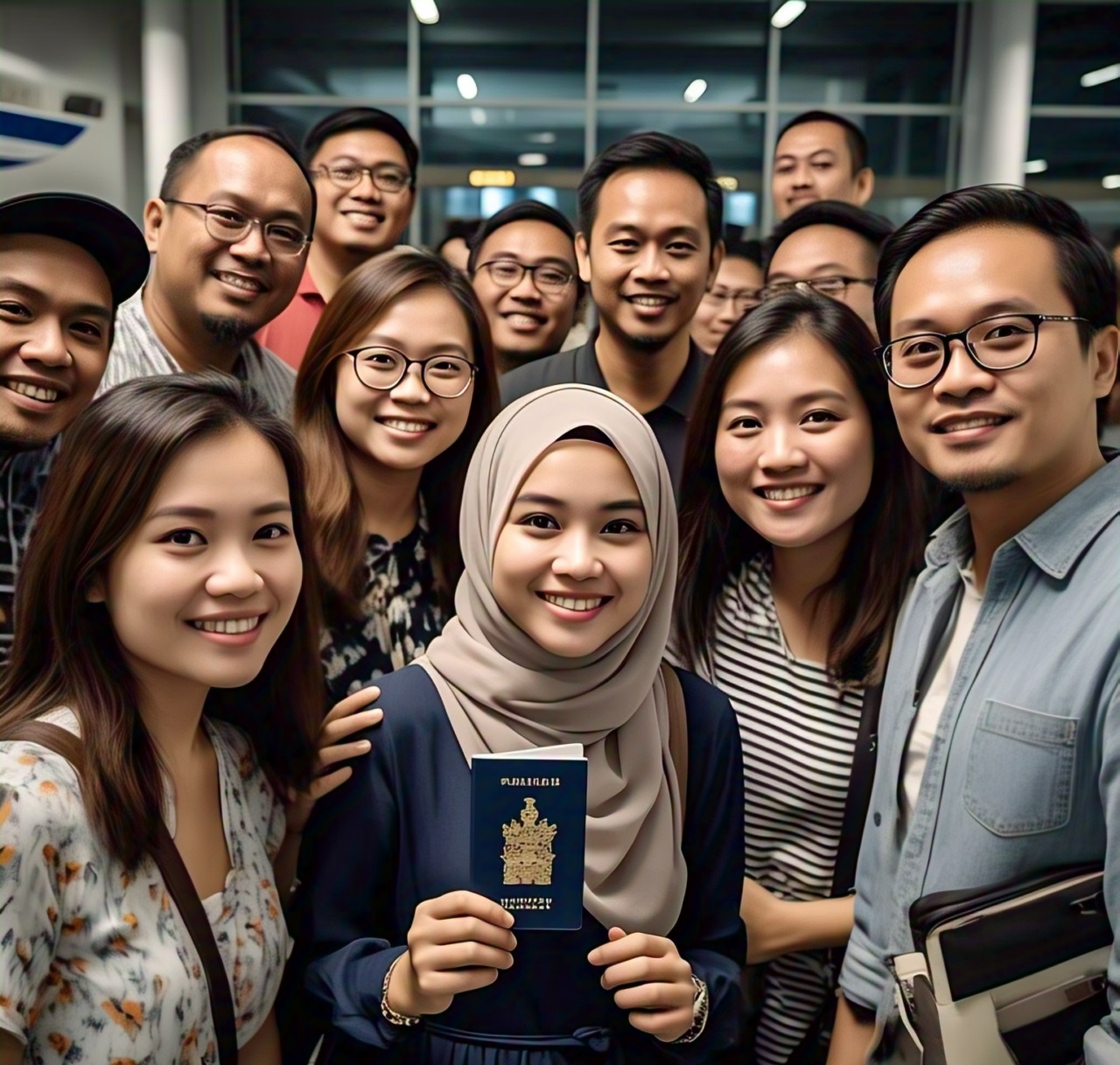Canada’s immigration system is constantly evolving, and recent changes to Express Entry categories—such as the inclusion of cooks and trades occupations—have led many applicants to reconsider their National Occupational Classification (NOC) codes. However, altering your NOC code without proper justification can have serious consequences, including a potential five-year ban for misrepresentation. Why Changing Your NOC Code Can Be Risky 1. IRCC Tracks Your Application History Immigration, Refugees and Citizenship Canada (IRCC) maintains a digital record of all your past applications, including: If you change your NOC code in a new application, IRCC may cross-reference it with past submissions. Discrepancies in job titles, duties, or NOC codes can trigger a Procedural Fairness Letter (PFL), requiring you to justify the change. Failure to provide a valid explanation could result in a refusal or even a five-year ban for misrepresentation. 2. Provincial Nominee Programs (PNPs) Also Scrutinize NOC Codes Provincial programs like the Saskatchewan Immigrant Nominee Program (SINP) and the Ontario Immigrant Nominee Program (OINP) cross-check your Express Entry profile and past applications. In one case, an applicant who claimed to be an HR manager in their PNP application—but had previously listed a different NOC code in Express Entry—was issued a five-year ban for misrepresentation. 3. Not All NOC Code Changes Are Equal – Minor Adjustments (Same NOC, Different Job Title): If your job duties remain consistent with the NOC code, updating your title (e.g., from “Chef” to “Cook”) may be acceptable. – Major Changes (Switching to a Different NOC): If you switch to an entirely different occupation (e.g., from “Restaurant Manager” to “Cook”), IRCC may question whether you are attempting to “game” the system. Key Considerations Before Updating Your NOC Code 1. Do Your Job Duties Match the New NOC? Your NOC selection must align with your actual job responsibilities. For example: If your employment letter does not support the new NOC, your application could be refused. 2. Do You Meet the Employment Requirements? Some NOC codes have specific education or licensing requirements. For example: If you lack the necessary qualifications, IRCC may reject your application. 3. Was the Change Justified? If you made an honest mistake (e.g., selecting the wrong NOC initially), you may be able to correct it—but you must provide a reasonable explanation. However, if IRCC suspects you are manipulating the system to qualify for a specific draw, you risk severe penalties. Final Advice: Proceed with Caution Before updating your NOC code: ✔ Review your past applications to ensure consistency. ✔ Verify that your job duties match the new NOC. ✔ Check if you meet employment requirements (education, licensing, etc.). ✔ Consult a licensed immigration professional if unsure. Misrepresentation can derail your Canadian immigration journey. Always ensure your application reflects accurate and verifiable information. — Need personalized advice? If you’re unsure about your NOC code or eligibility, consider consulting a Regulated Canadian Immigration Consultant (RCIC) or lawyer before making changes. Stay informed, stay compliant, and make the right choices for your Canadian immigration future. 🇨🇦 Let Worldbridge Immigration Services be your guide to a successful future in Canada Contact us: Website: www.theworldbridge.ca Email: info@theworldbridge.ca Phone/WhatsApp: +1-416-727-7766 Social Media: @worldbridgeHQ
BREAKING: Canada Removes Job Offer & LMIA Points from Express Entry – Major IRCC Update (March 2025)
In a significant policy shift, Immigration, Refugees and Citizenship Canada (IRCC) has officially confirmed the removal of job offer points from the Comprehensive Ranking System (CRS) for Express Entry candidates. Effective March 25, 2025, both the 200-point bonus for senior management (NOC 00) and the 50-point bonus for other skilled occupations (NOC TEER 0-3) will no longer be awarded. Key Changes Announced by IRCC 1. Job Offer Points Eliminated 2. What Remains Unchanged? 3. System Updates & Potential Glitches Why This Change Matters What Should Applicants Do Now? Final Thoughts This policy change marks a major shift in Canada’s immigration strategy, moving away from employer-dependent points and toward a more skills-focused system. While some candidates may face challenges, the adjustment could lead to **lower CRS cutoffs** in general draws, benefiting high-scoring applicants without job offers. For further updates and detailed analysis, stay tuned to official IRCC announcements and consult immigration experts for personalized guidance. Follow for more breaking Canada immigration news and policy changes. Let Worldbridge Immigration Services be your guide to a successful future in Canada Contact us: Website: www.theworldbridge.ca Email: info@theworldbridge.ca Phone/WhatsApp: +1-416-727-7766 Social Media: @worldbridgeHQ
Canada’s Immigration Landscape Transforms Under New Leadership in 2025
Canada’s immigration policies are undergoing a significant transformation under the leadership of newly appointed Prime Minister Mark Carney and Immigration Minister Rachel Bendayan. These changes mark a pivotal shift in the country’s approach to immigration, with a renewed focus on economic stability, infrastructure capacity, and sustainable integration. Aspiring immigrants must prepare for a new era in Canadian immigration, as the government seeks to balance the nation’s need for skilled labor with the demands on housing, healthcare, and social services. Economic Expertise at the Helm Prime Minister Mark Carney, a renowned economist and former Governor of both the Bank of Canada and the Bank of England, brings a wealth of financial acumen to his role. His appointment signals a strategic realignment of immigration policies to better serve Canada’s economic objectives. Carney has emphasized the importance of ensuring that immigration contributes positively to economic growth without overburdening existing infrastructure. This approach reflects a commitment to sustainable development, where immigration levels are carefully calibrated to match the country’s capacity to provide adequate housing, healthcare, and social services. A Fresh Perspective on Immigration Policy Rachel Bendayan, the newly appointed Immigration Minister, brings a robust legal background and extensive government experience to her role. Previously serving as the Minister of Official Languages, Bendayan is expected to implement policies that balance economic needs with social responsibilities. Her vision for immigration focuses on maintaining a sustainable influx of newcomers, ensuring that Canada can effectively integrate them into society while addressing critical labor shortages in key sectors. Key Changes for Prospective Immigrants Under the leadership of Carney and Bendayan, several key changes are anticipated in Canada’s immigration policies: 1. Alignment with Infrastructure and Social Services**: Immigration levels may be adjusted to better align with Canada’s capacity to support newcomers. This could involve revisiting pre-pandemic immigration targets to ensure sustainable growth and avoid straining public resources. 2.Scrutiny of Temporary Resident Programs**: Policies concerning temporary residents, including international students and foreign workers, are expected to be reevaluated. The government aims to balance the economic benefits of temporary labor with the need to provide adequate services and integration opportunities. 3.Economic-Driven Immigration Strategies**: Immigration strategies will increasingly prioritize sectors experiencing labor shortages, particularly those requiring specialized skill sets. This targeted approach aims to maximize the economic benefits of immigration while addressing critical gaps in the labor market. A Commitment to Sustainable Integration The leadership of Carney and Bendayan reflects a commitment to maintaining Canada’s reputation as a welcoming nation while ensuring that immigration contributes positively to the country’s prosperity. By aligning immigration policies with economic goals and infrastructure capacity, the government aims to create a sustainable framework that benefits both newcomers and Canadian society as a whole. Looking Ahead As Canada’s immigration landscape evolves, prospective immigrants are encouraged to stay informed about these changes to navigate the new policies effectively. The emphasis on economic alignment and sustainable integration underscores the government’s dedication to fostering a prosperous and inclusive future for all. In conclusion, the leadership of Prime Minister Mark Carney and Immigration Minister Rachel Bendayan marks a transformative moment in Canada’s immigration history. Their focus on economic stability, infrastructure capacity, and sustainable integration sets the stage for a balanced and prosperous immigration system that will shape the country’s future for years to come. Let Worldbridge Immigration Services be your guide to a successful future in Canada Contact us: Website: www.theworldbridge.ca Email: info@theworldbridge.ca Phone/WhatsApp: +1-416-727-7766 Social Media: @worldbridgeHQ
Canada Expands PGWP Eligibility: A Game-Changer for International Graduates
A New Era for International Students in Canada In a significant policy shift, Canada has expanded the scope of its Post-Graduation Work Permit (PGWP) program, providing international students with greater opportunities to integrate into the Canadian workforce. This update aligns with the country’s evolving labor market needs and reflects the government’s commitment to addressing key employment gaps. Key Updates to PGWP Eligibility As of December 17, 2024, Immigration, Refugees and Citizenship Canada (IRCC) has expanded the list of academic programs eligible for PGWP. The most notable additions include fields related to early childhood education and developmental services, addressing labor shortages in these critical sectors. Newly eligible programs include: This expansion follows an earlier November 1, 2024 update, which introduced field-of-study requirements for PGWP eligibility. Initially, 966 programs spanning agriculture, healthcare, STEM, skilled trades, and transportation were included. The recent addition of education-related disciplines underscores a targeted approach to workforce development. Implications for International Students These changes present significant benefits for international students pursuing education in Canada. By prioritizing academic programs in sectors experiencing labor shortages, graduates will have stronger employment prospects and an easier pathway to securing work in Canada. For students specializing in early childhood education and related fields, this policy shift enhances their ability to gain meaningful employment upon graduation, contributing directly to the economy and addressing workforce gaps. Additionally, this update demonstrates Canada’s strategic efforts to create a more responsive immigration system that aligns educational opportunities with market demands. Navigating the New PGWP Landscape As Canada’s immigration and education policies continue to evolve, prospective international students must stay informed to maximize their opportunities. It is essential for applicants to: Conclusion Canada’s PGWP expansion represents a well-calibrated approach to strengthening the connection between education and employment. By widening eligibility to include education-related fields, the government is taking proactive steps to support both international students and the nation’s labor market. For those aspiring to study and work in Canada, staying up-to-date on these policy shifts is crucial. As opportunities continue to expand, informed decisions will be key to successfully navigating Canada’s dynamic immigration landscape. Let Worldbridge Immigration Services be your guide to a successful future in Canada Contact us: Website: www.theworldbridge.ca Email: info@theworldbridge.ca Phone/WhatsApp: +1-416-727-7766 Social Media: @worldbridgeHQ
Canada Unveils New Permanent Residency Pathway for Construction Workers Amidst Labor Shortages
Waterloo, Ontario – In a significant move to bolster its construction sector and address critical labor shortages, the Canadian government has announced a new permanent residency pathway specifically for undocumented construction workers. This initiative, unveiled by Immigration, Refugees and Citizenship Canada (IRCC) Minister Mark Miller on March 7, 2025, in Woodbridge, Ontario, aims to provide a route to legal status for thousands of individuals who have been contributing to Canada’s economy without formal documentation. The announcement comes at a crucial time, as Canada grapples with a severe housing crisis and a pressing need for skilled tradespeople. The government’s strategy also includes the removal of study permit requirements for temporary foreign workers seeking apprenticeships, and the establishment of an advisory council to steer federal policies related to the construction industry. Pathway to Permanent Residency for Undocumented Workers A cornerstone of the new policy is the allocation of up to 6,000 immigration spaces for undocumented construction workers currently residing and employed in Canada. This measure seeks to regularize the status of those who have faced barriers due to previous immigration policy gaps or employer-related issues. While specific eligibility criteria, application procedures, and timelines are yet to be released, this initiative builds upon past efforts to integrate undocumented workers, particularly within the construction sector. Easing Apprenticeship Requirements Effective immediately, temporary foreign workers seeking to enroll in apprenticeship programs in Canada will no longer be required to obtain a study permit. This change aims to eliminate administrative hurdles that previously hindered skilled workers from pursuing further training while employed. By removing the necessity for study permits, which were often difficult to acquire from within Canada, the government hopes to facilitate skill enhancement and career advancement within the construction industry. Advisory Council and Foreign Worker Intake To further support the construction sector, Minister Miller announced the formation of a new advisory council comprising representatives from the federal government, labor unions, and construction industry employers. This council will address key issues such as prevailing wages and the appropriate intake of foreign construction workers through both temporary and permanent pathways. Minister Miller indicated that up to 14,000 foreign nationals may be admitted to the construction sector, though details regarding the specific immigration streams remain forthcoming. Addressing Labor Shortages and Housing Crisis The impetus for these changes stems from Canada’s acute labor shortages in the construction industry, compounded by the ongoing housing crisis. The Canada Mortgage and Housing Corporation estimates a need for six million additional homes by 2030 to restore housing affordability. However, the current skilled labor force is insufficient to meet this demand. Statistics Canada reports that immigrants constitute a significant portion of the construction workforce, highlighting the sector’s reliance on foreign talent. Minister Miller acknowledged the nation’s difficulty in producing an adequate number of skilled tradespeople domestically, emphasizing the necessity for targeted immigration pathways. Express Entry Enhancements and Previous Initiatives Recent modifications to the Express Entry system, implemented on February 27, 2025, have also prioritized skilled trades occupations, designating them as a priority category and adding 19 new occupations to the skilled trades category. These changes aim to streamline the path to permanent residency for construction workers. The new regularization pathway builds on the 2020 temporary public policy for Greater Toronto Area (GTA) construction workers, which provided a route to permanent residency for out-of-status individuals. This program, which concluded on December 31, 2024, facilitated the permanent residency of approximately 1,365 undocumented workers and their families. Immigration Levels Plan and Housing Concerns Canada’s 2025-2027 immigration levels plan reflects concerns regarding housing supply. In November 2024, the government reduced immigration targets for both permanent and temporary residents, aiming to alleviate pressure on housing availability. An “in-Canada” focused category was introduced to prioritize candidates already residing and working in Canada, with 82,890 new immigrants expected to obtain permanent residency through this stream in 2025. As this story develops, further details regarding the new permanent residency pathway and related initiatives will be released. Interested individuals are encouraged to stay informed through our website for updates and consult with our immigration professionals. Let Worldbridge Immigration Services be your guide to a successful future in Canada Contact us: Website: www.theworldbridge.ca Email: info@theworldbridge.ca Phone/WhatsApp: +1-416-727-7766 Social Media: @worldbridgeHQ
Canada’s New Home Care Worker PR Program Launching March 31, 2025
Are you in Canada and looking for permanent residency (PR) in 2025? The Home Care Worker Immigration Pilot Program offers a streamlined pathway for eligible applicants. This updated program is more flexible and features two streams based on your location: Eligibility Criteria To qualify under the first stream (opening March 31, 2025), you must: Finding an Eligible Employer Key Considerations What’s Next? This program offers a straightforward PR pathway with no LMIA or work experience required, making it one of the easiest routes to Canadian PR for home care workers. Act now to secure your spot! Let Worldbridge Immigration Services be your guide to a successful future in Canada Contact us: Website: www.theworldbridge.ca Email: info@theworldbridge.ca Phone/WhatsApp: +1-416-727-7766 Social Media: @worldbridgeHQ
Canada to Grant Status to Thousands of Undocumented Construction Workers
The Canadian government has introduced a new immigration initiative aimed at regularizing the status of thousands of undocumented construction workers. This move is intended to address the country’s pressing labor shortages in the housing sector while providing these workers with the opportunity to remain in Canada legally. A Step Towards Regularization In 2021, the federal government pledged to explore pathways for granting status to undocumented workers who are actively contributing to Canadian communities. Although no clear timeline was initially set, Immigration Minister Mark Miller has now announced that the time for action has arrived. According to Miller, this initiative aligns with Canada’s economic challenges and the urgent need for skilled labor in the construction industry. By legalizing these workers, the government aims to ensure fair wages and dignified working conditions. However, despite the significance of this step, many advocates argue that it does not go far enough. Addressing Labor Shortages – But Only in One Sector Canada’s construction industry is experiencing a severe workforce shortage. A 2023 report by RBC estimated that over 60,000 additional workers are needed to meet demand. The new program seeks to bridge this gap by legalizing undocumented construction workers, allowing them to contribute to the economy while securing their legal status. However, some critics believe this sector-specific approach is too narrow. According to immigration advocate Syed Hassan, industries such as cleaning, security, and manufacturing are all interconnected with construction. He argues that focusing solely on one sector ignores the broader workforce needs and leaves out thousands of other undocumented workers who also contribute significantly to the economy. New Advisory Council and Future Plans As part of this initiative, the government has also announced the formation of an advisory council. This council will include representatives from the federal government, labor unions, and industry leaders. Their role will be to assess labor needs and develop pathways for recruiting up to 14,000 skilled foreign workers. However, concerns have been raised about the council’s composition, as it does not include representation from migrant workers themselves. Additionally, with Canada’s political landscape shifting and the ruling party preparing for leadership changes, some critics question whether this initiative will be fully implemented or if it is merely a strategic political announcement. Looking Ahead While this new program has the potential to improve the lives of thousands of undocumented construction workers, many advocates stress the need for broader reforms. They argue that a more comprehensive approach, encompassing multiple industries, would better address the challenges faced by undocumented workers in Canada. As details of the program unfold, the effectiveness of this initiative will depend on its implementation and whether it serves as a foundation for further immigration reforms in the future. For further updates on this and other immigration-related developments, be sure to check back regularly Let Worldbridge Immigration Services be your guide to a successful future in Canada Contact us: Website: www.theworldbridge.ca Email: info@theworldbridge.ca Phone/WhatsApp: +1-416-727-7766 Social Media: @worldbridgeHQ
Understanding IRCC’s Express Entry Categories: How It Really Works
Canada’s Express Entry system has undergone significant changes with the introduction of category-based draws. These new categories have sparked both excitement and frustration among applicants. However, the key takeaway is that these changes align with Canada’s labor market priorities, focusing on occupations in high demand. What Are Category-Based Draws? Category-based draws are not separate immigration programs or streams. Instead, they function as a selection method within the existing Express Entry system. To be considered, candidates must first meet the eligibility requirements for one of the three main Express Entry programs: 1. Federal Skilled Worker Program (FSWP) Requires at least 67 points based on factors like age, education, work experience, language skills, and adaptability. A minimum of one year of continuous work experience in a single NOC code is required. Language proficiency must be at least CLB 7 in English or French. 2. Canadian Experience Class (CEC) Requires at least one year of Canadian work experience in the past three years. Language requirements depend on the job level (CLB 5 for certain occupations and CLB 7 for others). 3. Federal Skilled Trades Program (FSTP) Requires a valid job offer with an LMIA or a Certificate of Qualification. Two years of work experience in a relevant skilled trade. Once eligible, candidates enter the Express Entry pool, where IRCC selects profiles based on different factors, including these new categories. How Do the New Categories Work? Instead of selecting only the highest-scoring candidates, IRCC now prioritizes applicants with work experience in specific fields. For 2025, the six selected categories are: 1. French-Language Proficiency 2. Healthcare and Social Services Occupations (expanded from just healthcare) 3. STEM (Science, Technology, Engineering, and Mathematics) Occupations 4. Trades Occupations 5. Agriculture and Agri-Food Occupations 6. Education Occupations (new for 2025) To qualify for a category-based draw, candidates must: Surprisingly, IRCC does not require licensing for many regulated professions when applying through category-based draws. This means doctors, pharmacists, and other professionals can immigrate without holding a Canadian license. However, they will need to obtain the necessary credentials before practicing in Canada, which can delay their ability to fill labor shortages. Read More: New categories of express entry Final Thoughts While the new categories open doors for many applicants, they also exclude others whose occupations are not currently in demand. If your job is not on the list, exploring alternative immigration pathways is crucial. The Express Entry system continues to evolve, and staying informed will help you navigate the process successfully. Let Worldbridge Immigration Services be your guide to a successful future in Canada Contact us: Website: www.theworldbridge.ca Email: info@theworldbridge.ca Phone/WhatsApp: +1-416-727-7766 Social Media: @worldbridgeHQ
Canada Introduces Major Changes to Its Immigration Program for Permanent Residency
Canada’s immigration system is undergoing significant transformations, reshaping the Express Entry pathway for skilled workers. The latest revisions, announced on February 27, 2025, introduce new priority categories while eliminating others, impacting thousands of potential immigrants worldwide. These changes reflect Canada’s evolving labor market needs and long-term economic goals. New Education Category: A Boom for Educators A major highlight of the 2025 Express Entry update is the introduction of an education category, which now prioritizes professionals such as: This move underscores Canada’s recognition of the crucial role skilled educators play in shaping the nation’s future. With a growing population and increased demand for quality education, this category aims to attract professionals who can support the country’s learning and development sectors. Transport Category Removed: A Shift in Labor Priorities In contrast, Canada has entirely removed the transport category, affecting occupations that were once in high demand, including: This decision marks a shift in workforce priorities, leaving many in these professions reconsidering their immigration prospects. The removal indicates a possible stabilization or surplus in these sectors, redirecting focus to other industries experiencing acute labor shortages. Healthcare Sector Expansion with Targeted Adjustments The healthcare sector remains a key focus of Canada’s immigration strategy. The healthcare and social services category has been expanded to include roles such as: However, six occupations have been removed from this category, reflecting a more precise approach to addressing the sector’s evolving workforce needs. While the government has not disclosed the exact list of removed professions, this adjustment indicates a shift toward prioritizing certain healthcare roles over others. STEM Professionals Face Unexpected Cuts One of the most surprising changes involves the removal of several STEM-related occupations from the priority list. Roles such as: …are no longer classified under in-demand occupations. This shift has raised concerns among tech professionals about Canada’s long-term stance on innovation and technology. While STEM fields have historically been a strong component of Canada’s economic strategy, this move suggests a potential saturation in some areas or a reevaluation of the sector’s immediate labor needs. Navigating the New Immigration Landscape As Canada continues to refine its immigration policies, prospective applicants must remain proactive in understanding these evolving requirements. Aligning one’s skills with Canada’s labor market demands will be crucial for securing permanent residency. Key Takeaways for Aspiring Immigrants: 1-Stay updated on policy changes to assess eligibility. 2-Align career goals with Canada’s current priority sectors. 3-Consider alternative pathways if previous categories have been removed. These updates reflect Canada’s dynamic approach to immigration, balancing short-term labor shortages with long-term economic objectives. For those seeking permanent residency, adaptability and strategic career planning will be essential in navigating this shifting landscape. For more insights into Canada’s immigration policies and expert guidance, stay tuned for further updates. Have questions or opinions? Share your thoughts below! Let Worldbridge Immigration Services be your guide to a successful future in Canada Contact us: Website: www.theworldbridge.ca Email: info@theworldbridge.ca Phone/WhatsApp: +1-416-727-7766 Social Media: @worldbridgeHQ
New Categories for Express Entry Announced by IRCC: What You Need to Know
The Immigration, Refugees and Citizenship Canada (IRCC) has revealed the new categories for Express Entry, a significant development that has been eagerly anticipated. The announcement brings clarity to the confusion surrounding the categories, which were previously uncertain. The new categories are part of the Federal Economic Priorities, which aim to address labor market shortages in specific sectors. The six categories are: 1-French Language Proficiency: Candidates with strong French language skills, scoring level 7 in all four factors, are eligible for this category. 2-Healthcare and Social Services Occupations: This category includes healthcare professionals, such as nurses, doctors, and pharmacists, as well as social services occupations like counselors and social workers. 3-STEM (Science, Technology, Engineering, and Math) Occupations: Although the STEM category has been significantly reduced, it still includes some IT and tech-related occupations, such as cybersecurity specialists. 4-Trade Occupations: This category has been expanded to include more occupations, such as roofers, concrete finishers, and cooks. 5-Agriculture and Agri-Food Occupations: This category includes occupations like butchers and farm workers. 6-Education Occupations: This new category includes teachers, instructors, and education assistants. The IRCC has allocated 41,700 spots for these categories, with a focus on French-speaking candidates outside of Quebec. The number of invitations to apply (ITAs) will be lower than the allocated spots, as each ITA can include multiple family members. The new categories have raised some questions, particularly regarding the inclusion of cooks under trade occupations and insurance agents under STEM occupations. While these inclusions may seem unexpected, they reflect the labor market priorities identified by the IRCC. It is essential to note that the Express Entry draws will not be as frequent as expected, and the scores required for selection may be higher due to the increased competition. Ontario’s immigration program, which has historically aligned with Express Entry, may also undergo changes in response to the new categories. In conclusion, the new categories for Express Entry offer opportunities for candidates with specific skills and experience. However, it is crucial to understand the labor market priorities and the potential challenges that come with these changes. As the IRCC continues to refine its immigration programs, it is essential to stay informed and adapt to the evolving landscape. Let Worldbridge Immigration Services be your guide to a successful future in Canada Contact us: Website: www.theworldbridge.ca Email: info@theworldbridge.ca Phone/WhatsApp: +1-416-727-7766 Social Media: @worldbridgeHQ









